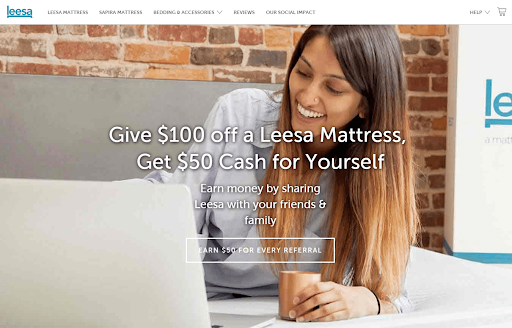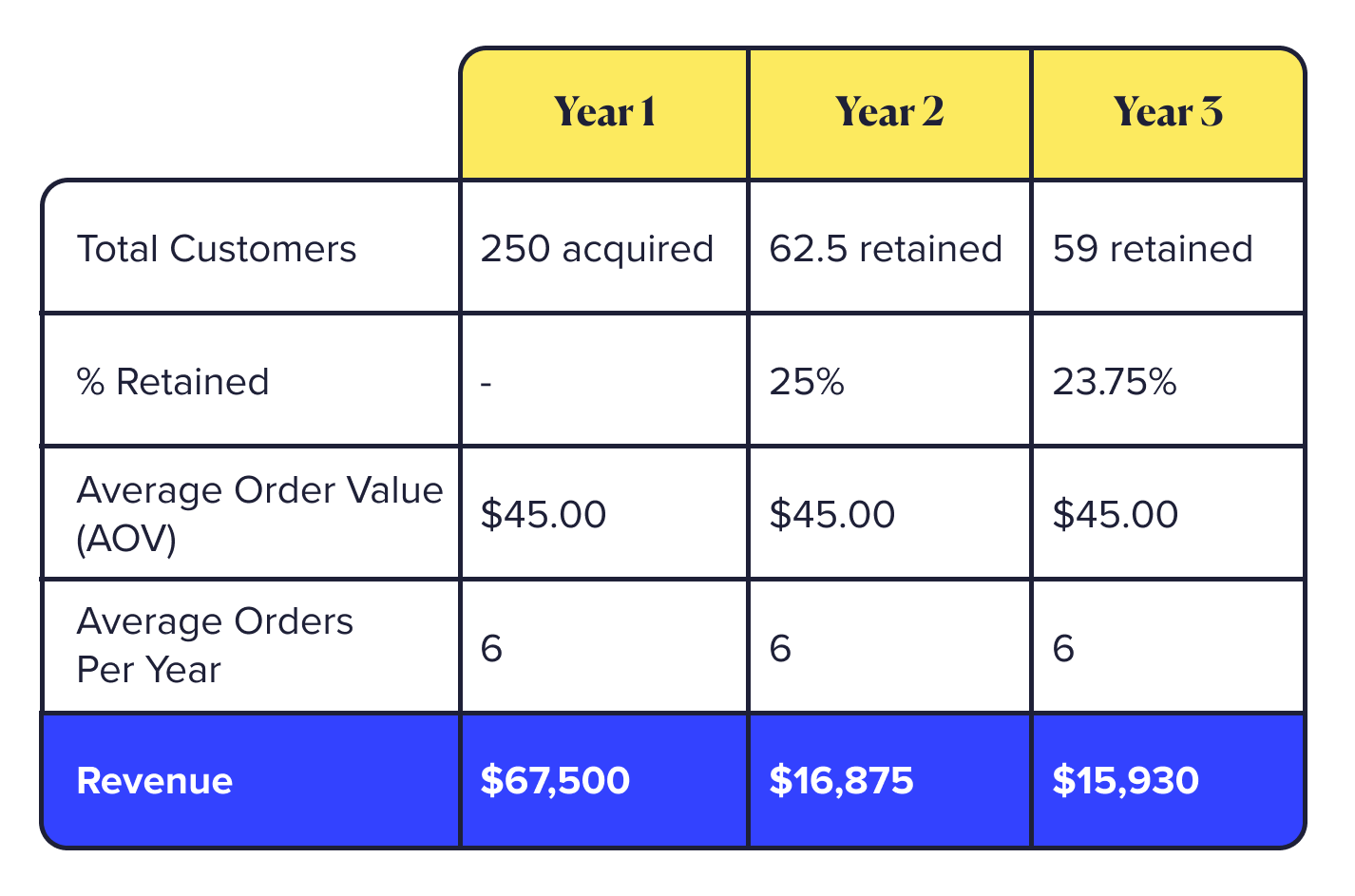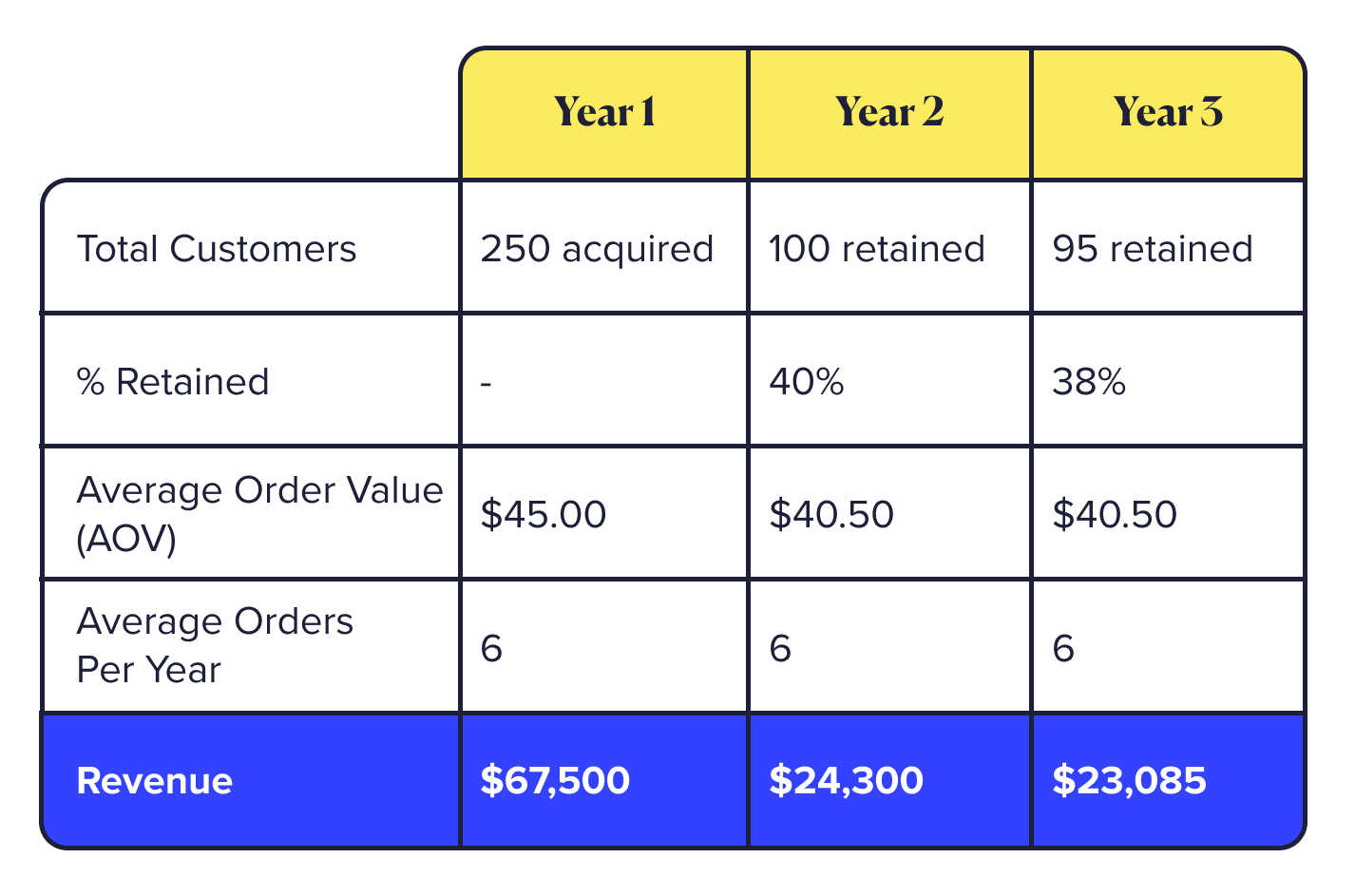Maximizing Customer Lifetime Value: Retention Strategies for Sustained Growth
As a growth agency, we have to get a deep understanding of our partner’s revenue models quickly. Once we do, we build a tactical growth model based on what we see. When building growth models, we have to get a few things straight:
- Who is the target audience?
- How do they typically interact with the brand?
- What is the cost to acquire a new user/customer?
- What is the average customer lifetime value (LTV) of that user/customer?
Understanding the answer to that final LTV question is so vitally important, but it’s something that a surprising number of businesses ignore. The only way to really know if your acquisition efforts are profitable is to understand how much revenue your customers generate over the course of the relationship.
Whether you’re an e-commerce brand selling direct to consumer, a SaaS company looking to find more enterprise users, or a mobile app just launching your product, retaining customers and increasing the average lifetime value of those customers is imperative to growing your business.
While Tuff is largely focused on acquisition, we keep a very close eye on customer churn and repeat purchase rates. These often overlooked metrics can help multiply revenue growth if assigned equal importance to acquisition tactics. LTV can be the metric that unlocks the next level of growth for your company.
This blog post will answer the following questions:
- What is LTV?
- How can a company increase customer retention and LTV?
- What are the long-term benefits of increased LTV?
Come along as we explore these strategies and plot out a path of continuous growth. All powered by maximizing lifetime value.
Customer Lifetime Value Formula
As mentioned earlier, LTV can be the key to unlocking the next level of growth for your company because it provides a framework for multiplying profitability. You may be thinking, “That’s great, but how do you actually calculate it?” Thankfully, this part is fairly straightforward:
Average Order Value * Average Orders per Year * Average Customer Lifespan = LTV
Understanding this metric is the critical first step in knowing how much you should be paying to acquire a new customer, and how profitable your current acquisition efforts are. The implications of your customer LTV are about as simple as the equation. A higher average LTV means more revenue per customer, and you can tolerate a higher CAC while keeping new customers profitable.
At this point, we can all agree that increasing our average LTV is a huge lever we can pull for growth. It can increase our total revenue at the end of the day and allow us to scale our acquisition efforts more aggressively. That’s all nice in theory, but how do we actually isolate and increase our LTV? 🤔
Retention Strategies for Boosting Lifetime Value
Building customer loyalty is the name of the game. The more you can engage with current customers and keep them satisfied, the more they’ll want to come back and reengage with your business. Here are four effective strategies to keep your customers coming back to increase LTV:
1. Use content to keep your customers engaged
Content marketing is a great tool for introducing new customers to your brand, but using it to engage with existing customers is one of the best ways to build brand loyalty and authority. Regularly distributing high-quality content to your customer base through email and social channels is a great way to reduce churn and increase repeat purchases. Regular, valuable content means engaged, happy customers.
2. Personalize your communication based on customer behavior
Email marketing platforms allow you to create all sorts of segmentations based on user behavior. Do you have two products that complement each other well? Does your software subscription require a renewal every 12 months? You can maximize your email strategy with customized messaging to target users right at the critical junctions of when they’ll either establish their brand loyalty or start reassessing their options. Get in touch with the right message at the right time and you’ll see loyalty jump.
3. Build out a referral program
Referral programs are the ultimate two-birds-with-one-stone tools for marketers looking to boost their retention and new customer acquisition efforts.
Here’s how they typically work: After a new customer makes a purchase, offer them a discount if they can get a friend to make a (discounted) purchase. Usually, your customer acquisition cost is higher than the combined value of the discounts, and you’re getting your users to spread the word of your brand for you. Increased LTV and new customers from one tactic, what more can you ask for? 🔥
4. Provide best-in-class customer service
While positive experiences can keep customers engaged, negative experiences can destroy that loyalty just as fast. One mistake early-stage brands make is not properly investing in a customer service infrastructure to support their customer base. Before scaling up your business, make sure that you’ve properly invested in your customer service. It could be the difference between creating a user base of one-time customers and creating customers who you’ll retain for years.
Sustained Growth through Lifetime Value Optimization
If implementing tactics to improve your LTV isn’t part of your current growth strategy, it’s probably time to rethink that roadmap. Increasing your LTV is such a powerful multiplier that can unlock new revenue and the next level of growth for your business. Let’s look at an example:
Imagine you run a company that sells high-end bagels through an online store. These are the best bagels out there and people can’t stop submitting orders. You’re generating 250 new customers each month and they’re buying a one-year subscription to your bagel service. Here’s what your numbers look like at the moment:
An AOV of $45 * 6 orders per year * an average customer lifespan of 1.49 years gives us an average LTV of $402.3. At your current rate, each one-month cohort will generate $100,305 in revenue
Not bad! That means that if you can acquire customers for less than $402.30, you’re making a profit. (We’re ignoring ALL overhead in this example.) You’ve got some room for improvement here though. Of those 250 new customers each month, only 25% of them are renewing their subscriptions, with a whopping 95% of those customers renewing for year three.
Based on that data, you know that retaining past year one is a great opportunity to generate additional revenue through increased average LTV. You work with your team on ideas to get more users to re-up their subscription after that first year and decide to send out a 10% off coupon to customers prompting them to renew 2 weeks out from their subscription expiration.
You see that renewal number jump from 25% all the way up to 40%! Let’s rerun those numbers for a one-month cohort:
With that 10% off offer in place, you’re getting an average additional 37.5 subscription renewals in month two. This leads to an additional 36 customers renewing for year three. This leaves you with a total of $114,885 in lifetime revenue from that cohort.
That’s a difference of $14,580. Apply that to a year’s worth of sales, and you can expect an additional $174,960 in lifetime revenue. This is just an example and you don’t always see these types of results, but putting efforts into place around increasing LTV can yield the kind of revenue increases that we see above.
LTV Efforts Go a Long Way 🚀
Just like customer acquisition, maximizing lifetime value is a matter of testing and learning. It’s all about trying things out and seeing what works.
Here’s the thing: Every company, no matter what you do, should be focusing on LTV right now. If you’re not holding onto your current customers and making them happy, you’re essentially sending them to your competitors. And who wants that?!
At Tuff, we’re a growth marketing culture that’s all about finding the correct levers to pull. It’s like discovering secret ingredients that make your favorite dish taste even better. Curious about how Tuff can combine your growth and customer retention efforts into one seamless system? Give us a holler!

Hi there! I’m Ethan, a Growth Marketer based in Steamboat Springs, Colorado. I have four years of digital agency experience under my belt creating and executing acquisition strategies for a number of different verticals across multiple channels. When I’m not at my desk, you can find me skiing, mountain biking, or chasing my dog around in the mountains.









